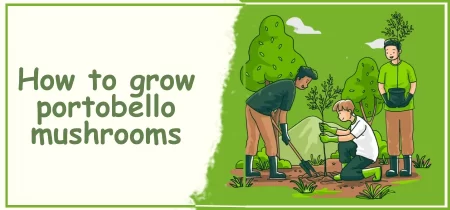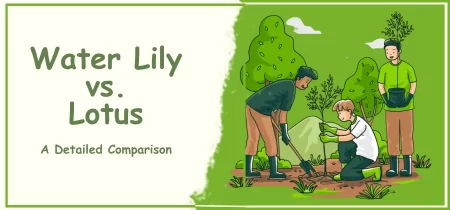Have you ever gone to attach your hose to the Faucet outside, only to find no connector? It can be frustrating when you’re trying to get the water flowing for your plants or lawn. Luckily, it’s a pretty easy fix. Here’s how to do it.
How Do I Attach a Garden Hose to an Existing Outside Tap?
There are a few different ways to attach a garden hose to an existing outside tap, depending on the type of tap you have.
If you have a threaded outside tap, you can simply screw a garden hose adapter onto the thread. If your outside tap is nonthreaded, you can use a washer and nut to secure the adapter onto the tap.
Finally, if your outside tap has a lever handle, you can use a hose clamp to attach the garden hose. Read on for instructions on how to do each of these methods.
1. Screwing an adapter onto a threaded outside tap:
- Start by screwing a garden hose adapter onto the thread of your outside tap.
- Tighten the adapter with your hands until it is snug, then use a wrench to tighten it further. Be careful not to overtighten, or you may strip the thread.
- Screw your garden hose onto the adapter.
2. Using a washer and nut to attach an adapter to a nonthreaded outside tap:
- Start by wrapping a rubber washer around the end of your outside tap.
- Feed the garden hose adapter through the hole in the center of the washer.
- Place another rubber washer over the adapter, then screw on a nut.
Tighten the nut with your hands until it is snug, then use a wrench to tighten it further. Be careful not to overtighten, or you may damage the tap.
Screw your garden hose onto the adapter.
3. Using a hose clamp to attach a garden hose to a lever handle outside the tap:
- Locate the small hole in the end of the lever handle on your outside tap.
- Feed a small diameter hose clamp through the hole, then position it over the garden hose adapter.
- Tighten the hose clamp until it is snug. Be careful not to overtighten, or you may damage the tap.
- Screw your garden hose onto the adapter.
Now you know how to attach a garden hose to an existing outside tap! Whether you have a threaded, nonthreaded, or lever handle tap, simply follow the instructions above and you’ll be ready to water your garden in no time.
What’s The Standard Outdoor Faucet Size?
The standard outdoor faucet size is 1/2 inch. This is the measurements for the outside diameter of the pipe. The actual hole that needs to be drilled will be slightly larger, but this is the standard size for new homes and construction.
If you’re not sure what size your home’s outdoor faucets are, simply measure the outside diameter of the pipe with a tape measure.
If you’re looking to replace an old outdoor faucet, it’s essential to know what size replacement you need.
Many hardware stores and home improvement centers will stock 1/2inch outdoor faucets, but it’s always a good idea to bring the old one with you to be sure.
Once you’ve determined the size you need, simply follow the instructions on the package to install the new outdoor faucet.
Are Garden Hose Fittings Universal?
Yes, garden hose fittings are universal. This means that regardless of the brand or type of hose you have, the fitting will be the same.
The only exception to this rule is if you have a specialty hose, such as one for an RV or boat. In these cases, you may need to purchase a specialty fitting.
However, for the average garden hose, any standard fitting will work.
If you’re not sure what type of fitting you need, simply take the old one with you to the store. The sales associate should be able to help you find the right fitting for your hose. Once you have the fitting, follow the instructions on the package to install it.
How Do You Attach a Hose to a Tap Without an Adaptor?
If you don’t have an adaptor, you can still attach a hose to a tap. The easiest way to do this is to purchase a screwon hose connector. This type of connector will screw onto the end of the hose, and then screw onto the tap.
Another option is to use a pushon hose connector. This type of connector will push onto the end of the hose and then onto the tap. The only downside to this method is that it’s not as secure, so there’s a chance it could come loose.
If you’re using an adaptorfree connection, be sure to use a wrench or pliers to tighten the connection. This will help to ensure a tight seal and prevent leaks.
How Do You Repair a Leaking Hose Faucet?
There are a few things you can do to repair a leaking hose faucet. The first thing you should do is check the washer.
In most cases, a leaky faucet is caused by a worn out washer. If the washer is damaged, simply replace it with a new one.
If the washer isn’t the problem, then you may need to replace the entire faucet. This is a more complex repair, and you may need to hire a professional to do it.
However, if you’re handy and have experience with plumbing, you may be able to do it yourself.
Once you’ve repaired the leak, be sure to test it by running water through the faucet. If it’s still leaking, you may need to check for other issues, such as a cracked pipe.
Can You Attach a Garden Hose to a Kitchen Faucet?
Yes, you can attach a garden hose to a kitchen faucet. However, you’ll need to purchase an adaptor kit. This will allow you to connect the two different types of fittings. Once you have the kit, simply follow the instructions to install it.
It’s important to note that not all kitchen faucets are compatible with garden hoses. If you’re not sure if yours is, simply check the manufacturer’s instructions.
Additionally, you may need to purchase a different type of hose if your kitchen faucet has a sprayer attachment.
Once you’ve successfully attached the garden hose to the kitchen faucet, be sure to test it by running water through the hose. If there are any leaks, you’ll need to repair them before using the hose.
Can You Attach a Garden Hose to a Bathroom Faucet?
Yes, you can attach a garden hose to a bathroom faucet. However, you’ll need to purchase an adaptor kit. This will allow you to connect the two different types of fittings. Once you have the kit, simply follow the instructions to install it.
It’s important to note that not all bathroom faucets are compatible with garden hoses. If you’re not sure if yours is, simply check the manufacturer’s instructions.
Additionally, you may need to purchase a different type of hose if your bathroom faucet has a sprayer attachment.
Once you’ve successfully attached the garden hose to the bathroom faucet, be sure to test it by running water through the hose. If there are any leaks, you’ll need to repair them before using the hose.
Conclusion
So there you have it! Everything you ever wanted to know about how to attach a hose to an outdoor tap. Now that you know the ins and outs, go forth and water those plants!
If you’re still having trouble or have any questions, feel free to leave them in the comments below – we’d be happy to help.




Leave a Reply